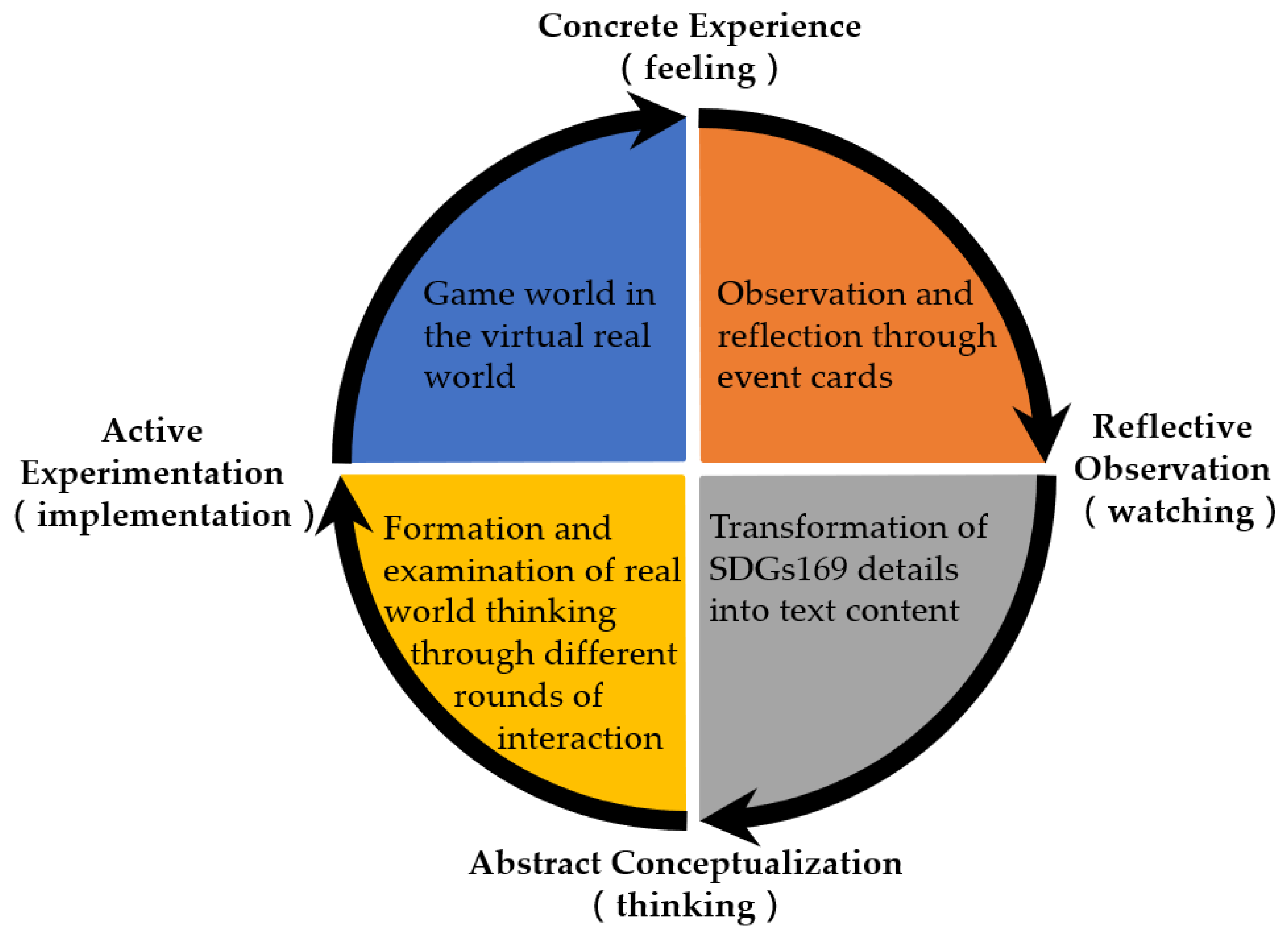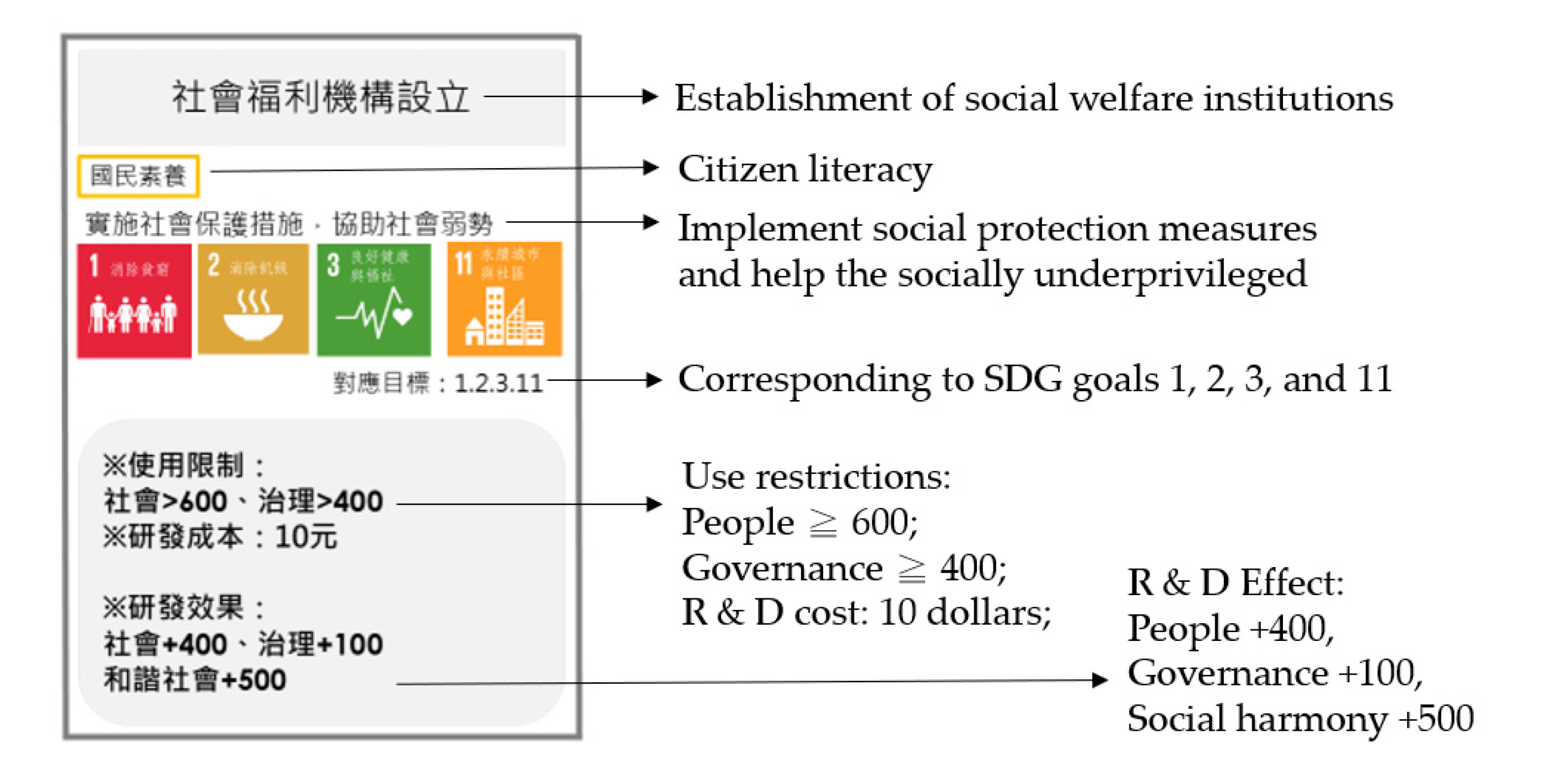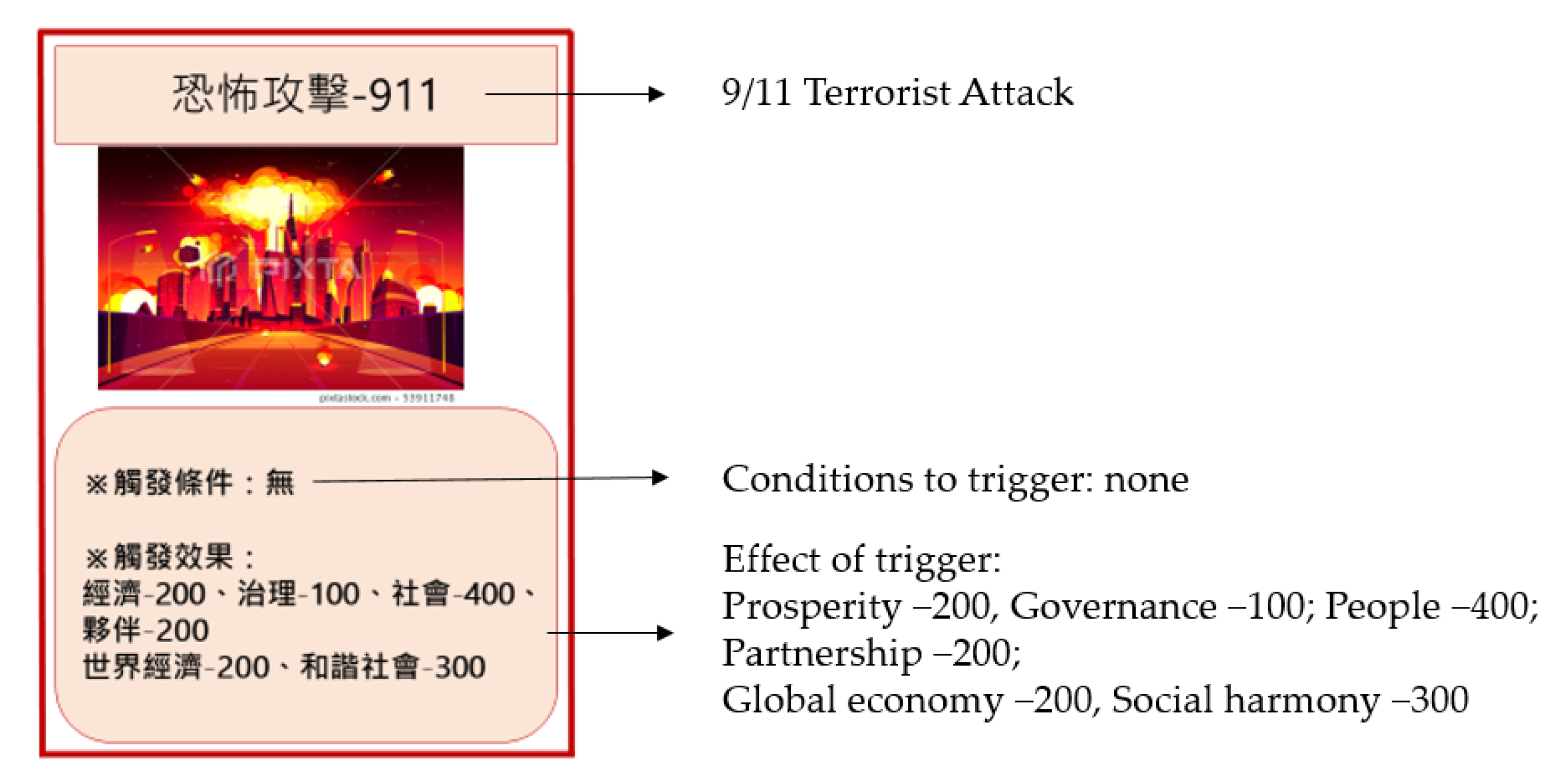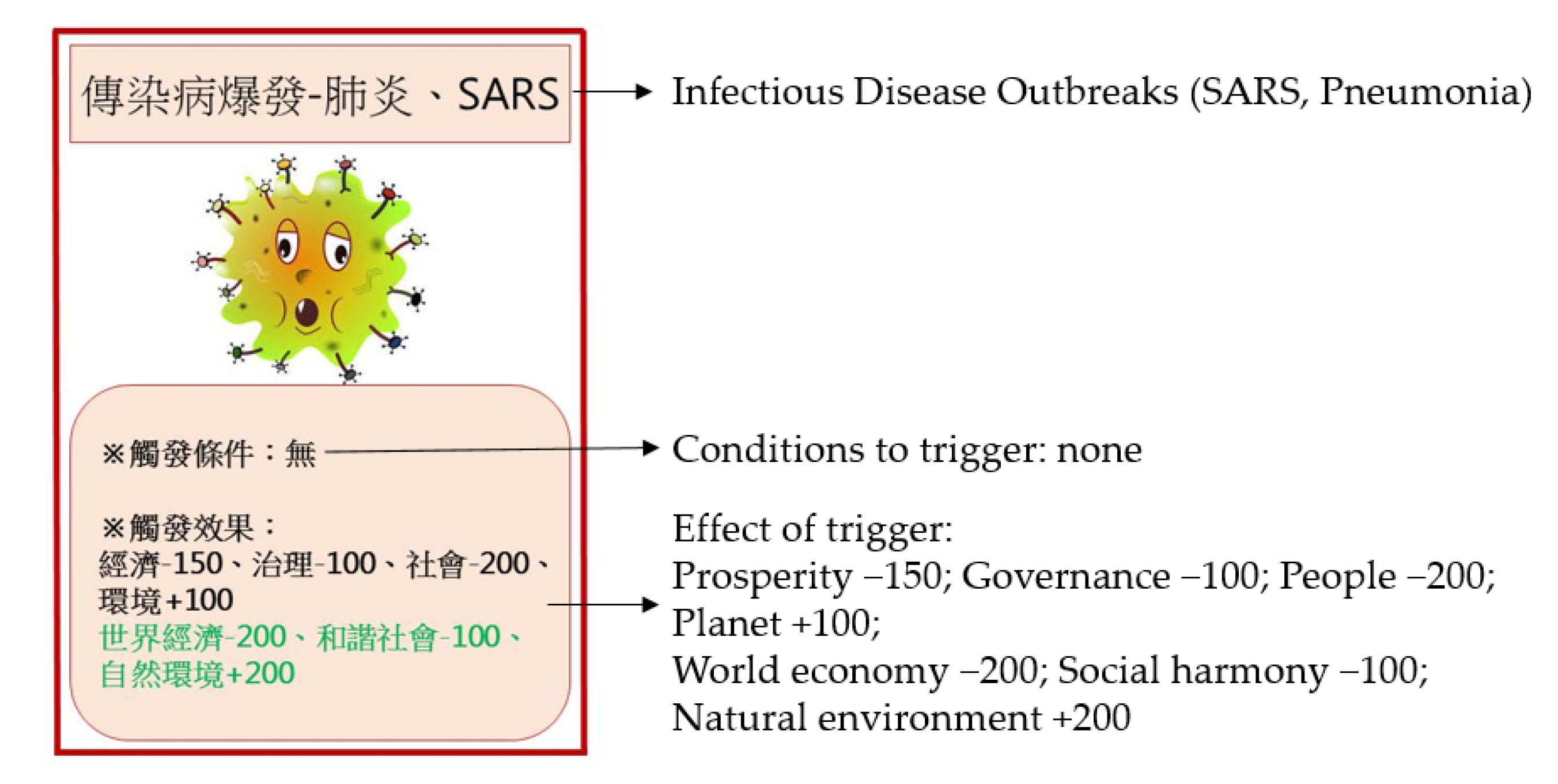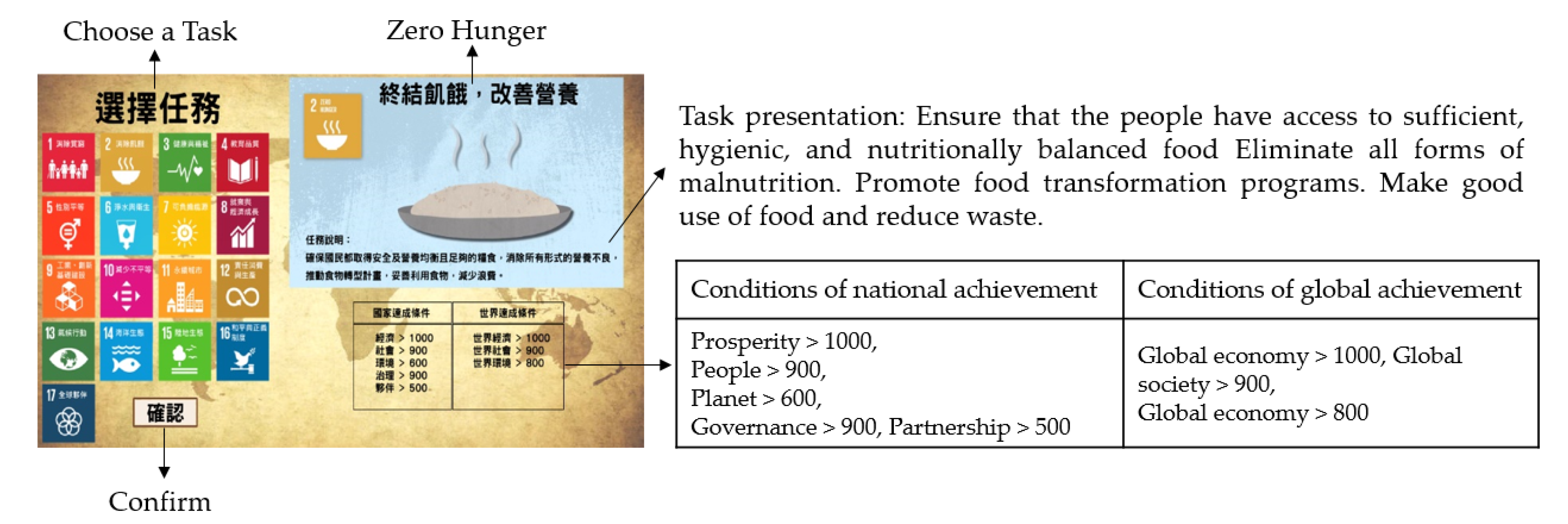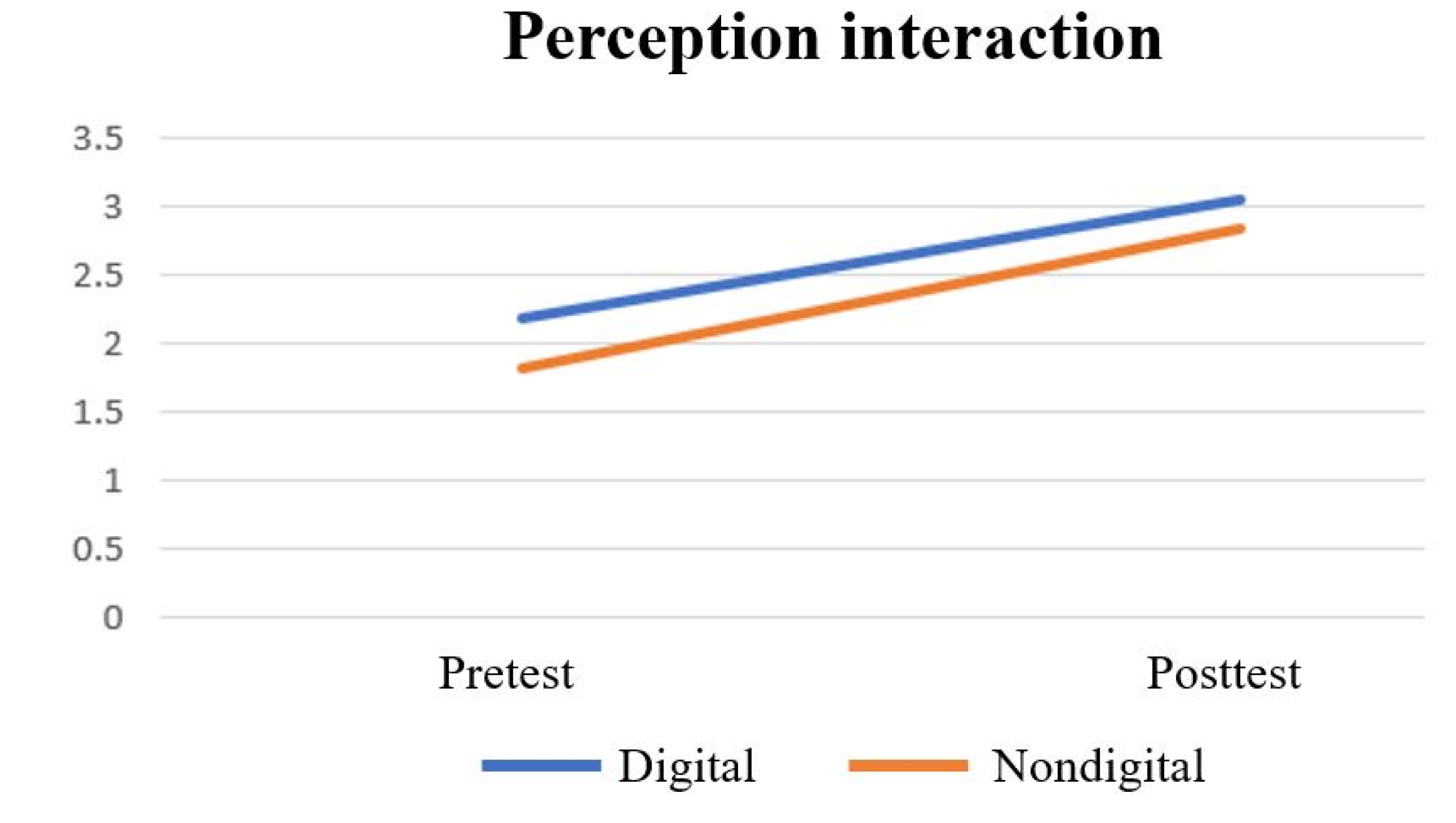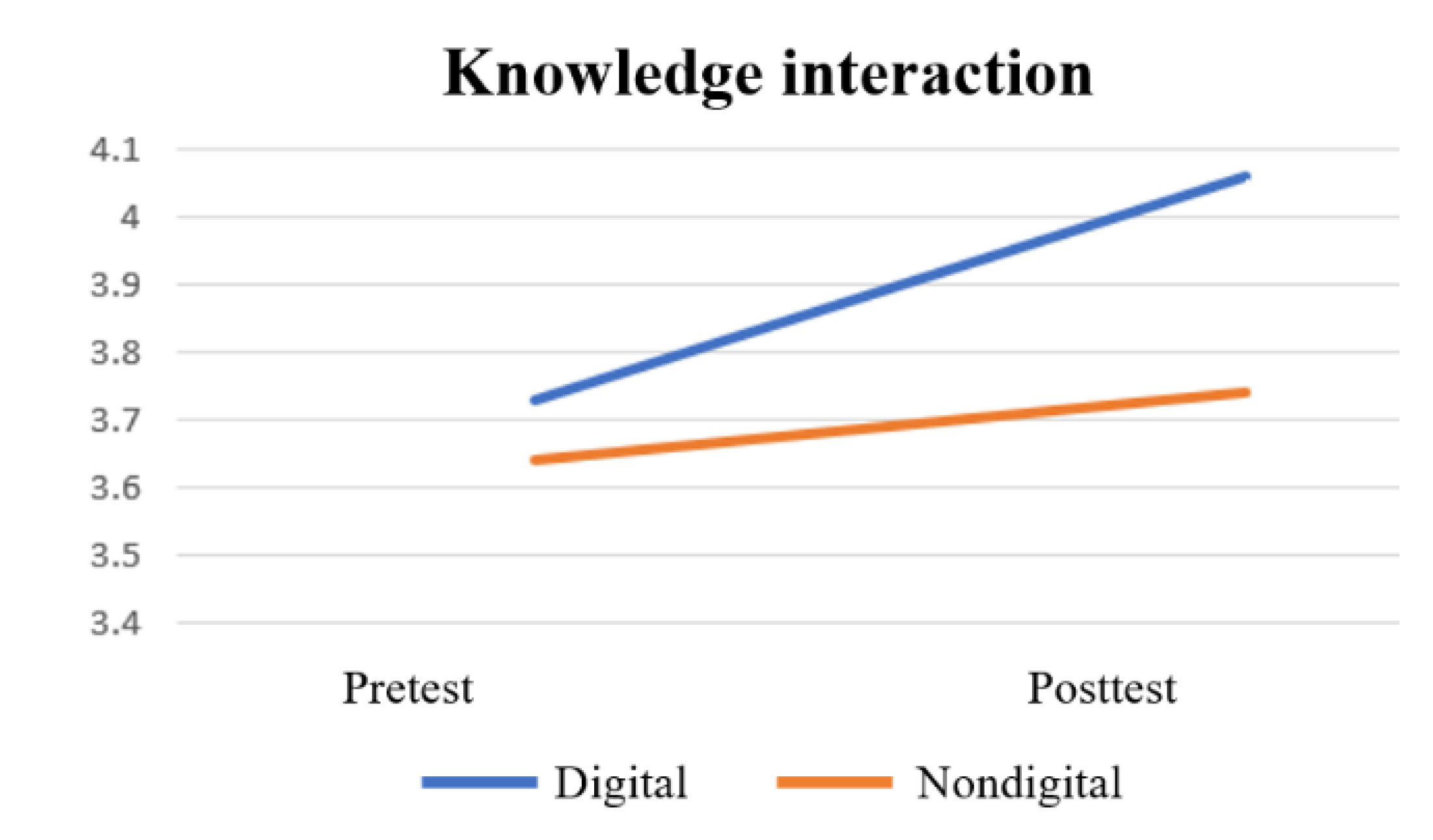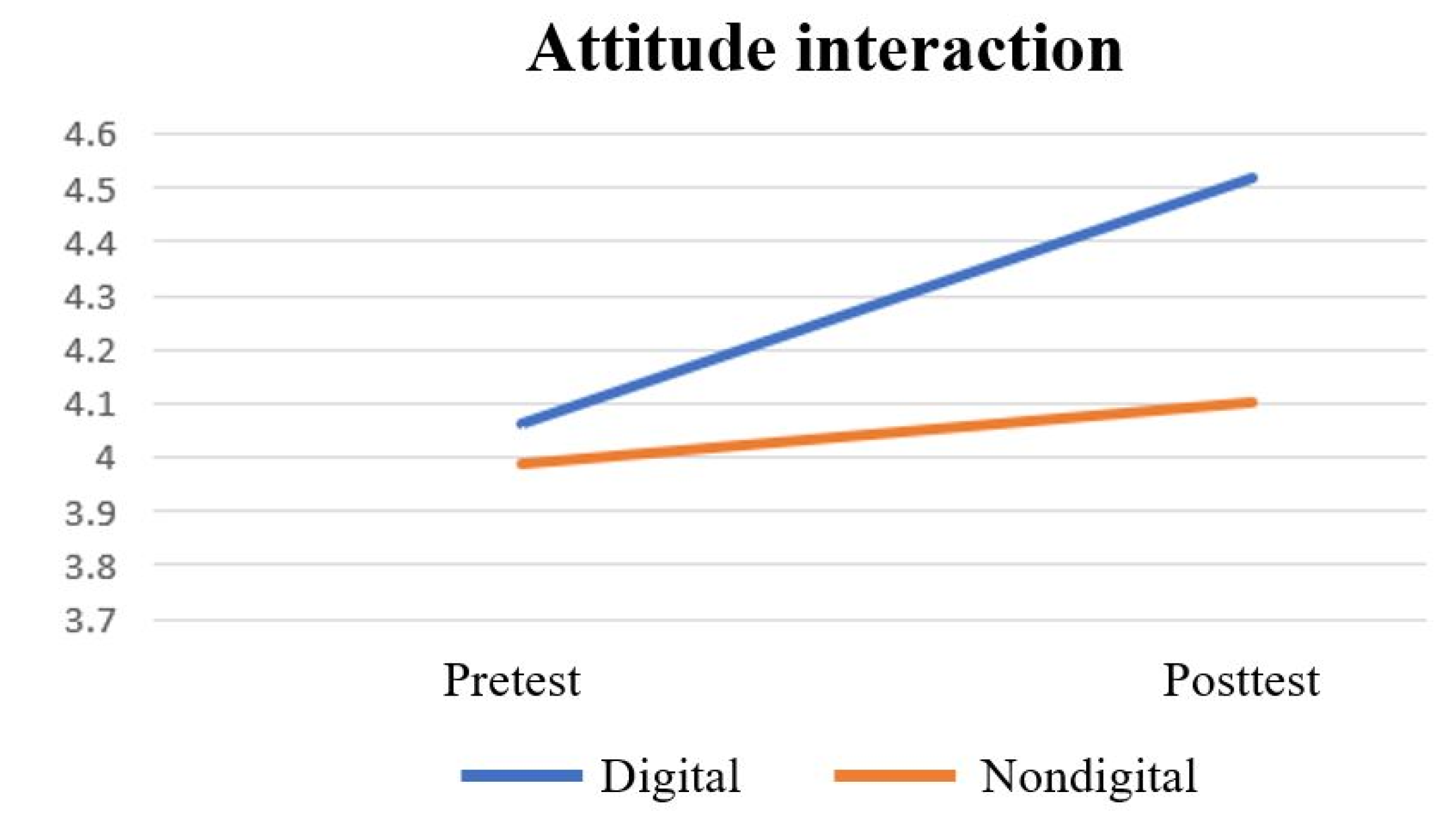1.1. Sustainable Development Goals
The Industrial Revolution has improved production efficiency and driven economic development and globalization. With these advances, serious economic, social, and environmental problems have also emerged. Therefore, the United Nations formulated the Sustainable Development Goals (SDGs) in 2015. The 17 objectives encompass environmental, social, and economic aspects that are intended to guide countries and regions around the world in building a world with the following characteristics: sufficient energy; abundant natural resources; equity for all; and no poverty, hunger, discrimination, violence, or exploitation. In this world, the disadvantaged can lead a smooth life and are respected, and humans and nature live in harmonious coexistence. The climate is pleasant and suitable for the existence of all living beings [
1]. The SDGs have gained widespread attention, and many international organizations [
2,
3,
4] have launched collaborative programs. Furthermore, various countries have successively proposed policies for local development [
5,
6], demonstrating a shared commitment to realizing the SDGs.
However, the promotion of sustainable development extends beyond state obligations; it is the right and responsibility of all citizens. In this regard, successful promotion is possible only with the concerted efforts of citizens, societies, states, and the international community. To make people aware of the criticalness and urgency of sustainable development and to make them work together to seek long-term peace and prosperity for human beings and the Earth, education is the key. Education can raise public awareness of and change attitudes toward sustainable development issues, thereby fostering sustainable development–related values and behaviors. Education is also the key to improving people’s skills in resolving environmental and development issues [
7]. Education inspires problem awareness and leads to preplanning based on systematic thinking, thereby facilitating the making of responsible decisions and actions.
Because sustainable development is a highly complex issue concerned with balancing environmental, social, and economic aspects, the 17 SDGs should not be treated separately; they are interrelated [
8]. Complex interdisciplinary concepts and knowledge must be acquired to foster a comprehensive understanding of the SDGs and the practice of sustainable development. For citizens to become practitioners and promoters of SDGs, education on sustainable development should be universally provided, thereby enabling learners to transform and reshape the world [
9].
To disseminate information on the SDGs, teachers should develop an instructional method to promote engagement as well as focused and spontaneous participation in learning. Conventional teaching methods fail to stimulate learning motivation [
10]. Motivating learners to actively engage in learning has become a major challenge in sustainable development education. Game-based learning can augment the fun of learning, encourage participation and spontaneity, and enhance concentration [
11]. This learning strategy helps students hone their planning and problem-solving skills and sparks creativity and strengthens intrinsic learning motivation [
12], thereby mitigating the problem of passive learning common in conventional teaching and effectively improving learning outcomes [
13]. Thus, game-based learning is considered a highly effective mode of learning [
14]. Accordingly, it should be incorporated into sustainable development education [
15].
1.2. Game-Based Learning
In game-based learning, knowledge or concepts are integrated into games from which learners naturally acquire relevant concepts or knowledge [
16]. A similar concept, serious games, refers to games designed for more than entertainment; they are intended to help learners develop new skills and knowledge. Such games touch on serious issues in education, medicine, military affairs, and corporate training [
17]. Following advances in information technology, digital devices such as computers and smartphones have become ubiquitous. Their integration into our everyday lives has inspired teachers and researchers in relevant fields to combine education and information technology in the form of digital game-based learning.
These terms commonly emphasize the integration of entertainment and learning. Education, training, and the propagation of ideas are realized through games and the playfulness and dynamism that attract learners. To avoid terminological confusion, in this paper, game-based learning encompasses all learning methods with these characteristics. Digital game-based learning refers to game-based learning employing computers, cell phones, and other technologies as the game medium. Non-digital game-based learning refers to the conventional form of game-based learning in which technologies are not typically used.
Numerous studies have confirmed that game-based learning can enhance public knowledge on social issues, change attitudes toward sustainable development and related subjects [
18,
19,
20,
21], increase motivation and facilitate different kinds of learning [
16], and equip learners with the complex, cross-disciplinary concepts and knowledge necessary for the practice of sustainable development [
22,
23,
24,
25,
26]. Based on its various advantages, game-based learning should be integrated into education [
15] to deliver knowledge on comprehensive sustainable development to the public. However, themes in game-based learning relating to sustainable development education primarily focus on the environment [
27] or emphasize one particular goal, precluding the full understanding of all aspects of sustainable development [
28].
To conduct an in-depth evaluation on games used in sustainable development education, sustainable development–themed games reviewed by Liarakou et al. [
29], dos Santos et al. [
30], and Stanitsas et al. [
28] were sorted. After duplicates were removed, 156 games remained, of which only 35 covered all three aspects of sustainability. Because some games were launched over 20 years ago, some of them are no longer accessible. In some cases, URLs to web pages listing relevant information had been removed. Few games for comprehensive sustainable development education are freely accessible to the public. Moreover, they are typically flawed; for instance, their settings may deviate considerably from reality. The evaluation methods may also be questionable, as exemplified by the following examples of digital game-based learning.
Through the SAMBA Role Play [
31] game, Boissau et al. demonstrated to northern Vietnamese farmers the difference in outcomes of planting upland rice versus cash crops. Wooden cubes of a particular color simulated a particular type of land use, such as forests, rice paddies, and cash crops. The participants were requested to allocate their land, labor, and capital. Through the game mechanism, the farmers understood the environmental damage caused by riverside deforestation. However, given the small sample size (
N = 10), no quantitative analysis was performed.
Chappin et al. [
18] incorporated conditions similar to those in Catan Scenarios: Oil Springs into Settlers of Catan, a popular board game. Through the simulation of the effects of petroleum extraction, including the economic benefits and environmental pollution it brings, public understanding of sustainability problems, including externalities, resource dependence, and the tragedy of the commons, was deepened. The objective was to inspire changes in public attitudes and behavior regarding sustainable development. Through qualitative analysis, the researchers confirmed that learners’ attitudes toward sustainability underwent shifts after the acquisition of sustainability knowledge, which, in turn, affected their sustainability-related behavior. However, due to an overemphasis on the effects of oil extraction in that study, the value of renewable energy appears to be overshadowed by cheaper and more powerful nonrenewable energy sources [
32].
In the LSD board game [
33], the effects assigned to various tiles are used to implement sustainable development in a community, with the aim of making learners aware of issues concerning urban development and environmental protection and changing their attitudes accordingly. Torres et al. mentioned that tests conducted on the game were not designed to demonstrate its effectiveness but were instead intended to reveal its strengths and weaknesses and promote improvement. Thus, although the researchers recorded the test-related data, they did not publish them in their study.
Examples of digital game-based learning are presented as follows. Through simulation, Stop Disasters! [
34] teaches learners about the potential risks of disasters such as tsunamis, hurricanes, wildfires, earthquakes, and floods and disseminates knowledge on disaster prevention, monitoring, and mitigation strategies. Pereira et al. reported that a focus on wildfire scenarios promoted the development of knowledge on wildfire prevention. Moreover, most of the learners considered the game enjoyable. According to Stanitsas et al. [
28], however, Stop Disasters! covers only two aspects of the SDGs: society and the environment. The game is less comprehensive in this regard; specifically, the learning themes address only SDG 9 (industry, innovation, and infrastructure), SDG 11 (sustainable cities and communities), and SDG 13 (climate action).
In Enercity [
19], learners are instructed to deploy measures for energy conservation, carbon reduction, and fossil fuel reduction. At the same time, they must determine how to generate more electricity to promote global economic development. The game endows learners with an awareness of the necessary balance between economy, energy, and environment. Through questionnaire analysis, Knol et al. observed that compared with those of the nonparticipants in the Enercity game, the game participants exhibited significant improvements in attitudes and behaviors regarding energy efficiency issues. However, Soekarjo et al. [
35] argued that because Knol et al. investigated only the posttest differences between the experimental and control groups, the results reported for game-attributed attitude changes may not be accurate or fully reflective of reality. Therefore, Soekarjo et al. reevaluated Enercity with an experimental group playing the game and a control group learning the same content through a PowerPoint file. The researchers conducted analyses of both a pretest and posttest on changes in the learners’ knowledge and attitudes. Contrary to expectations, changes in the experimental group did not differ significantly from those of the control group. Furthermore, improvements in micro-level attitude were more substantial in the control group than in the experimental group.
In Irrigania, an irrigation simulation game developed by Seibert et al. [
36], learners assume the role of farmers and irrigate their fields with rainwater, river water, or groundwater. Although water resources bring farmers profits, the excessive exploitation of water resources results in considerable reductions in both water level and profits. Learners must conceive means for balancing the moderate use of resources and the protection of personal interests. Knowledge on the tragedy of the commons was acquired, as was knowledge on the various effects and consequences of using diverse water resources. Ertsen et al. noted that Seibert et al. did not publish game-related data. Moreover, the identical initial values of upstream and downstream farmers deviated from reality [
37].
The flaws in the reviewed studies and games were noncomprehensive (Stop Disasters!), leading to a lack of definitively evaluated results due to the absence of quantitative analysis (SAMBA Role Play and LSD) and game settings divergent from reality (Catan Scenarios: Oil Springs and Irrigania). Thus, a self-developed game was employed in the present study.
We followed Kolb’s experience learning theory in developing a game-based learning approach that delivers comprehensive information on SDGs. In consideration of the on-going COVID-19 pandemic and its impediment to traditional learning, we developed a digital version of the game and compared the effects of non-digital and digital game-based learning. The role of the teacher was different in the non-digital and digital game. For the non-digital version of the game, teachers gave a tutorial and led discussion and interaction. For the digital game, students watched a video tutorial and teachers monitored the game-playing process from behind the scenes, giving students the freedom to lead the activity.
